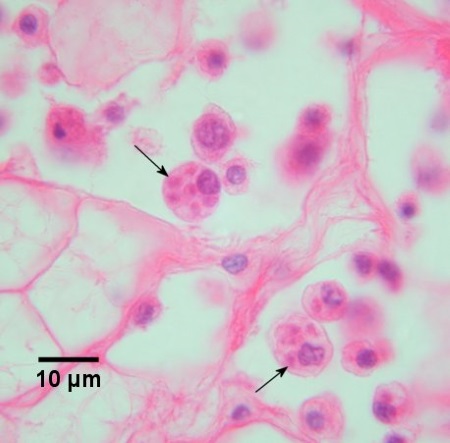
Bonamia ostreae
Protozoans
Bonamia ostreae is a haplosporidian parasite known primarily from Ostrea edulis, the European Flat Oyster, although it infects several other oyster species. Its geographic origin and original host(s) is/are unknown Although it was first described from Brittany, France (Pinchot et al. 1979), infections of O. edulis in Europe, Puget Sound, Maine and California bays, appear to have originated in a hatchery (closed sometime before 1966), in Elkhorn Slough California. A once-suspected host, native to California, the Olympic Oyster (O. lurida) could not be infected with B. ostreae, and its original host is unknown. It is suspected to have a complex life cycle, with at least one other invertebrate host, but other hosts have not been identified. Bonamia ostreae has produced extensive mortality, and affected oyster fisheries in Europe, and introduced populations in Maine and Atlantic Canada. Culture and fisheries of the European Oyster (sold as gourmet 'Belon' oysters) in Maine) have been affected by this parasite.
Image-
| Bonamia ostreae (arrows) within a few haemocytes in haemal spaces within the connective tissue of the mantle of Ostrea edulis. Haematoxylin and eosin stain. https://www.dfo-mpo.gc.ca/science/aah-saa/diseases-maladies/bonostoy-eng.html#dis |